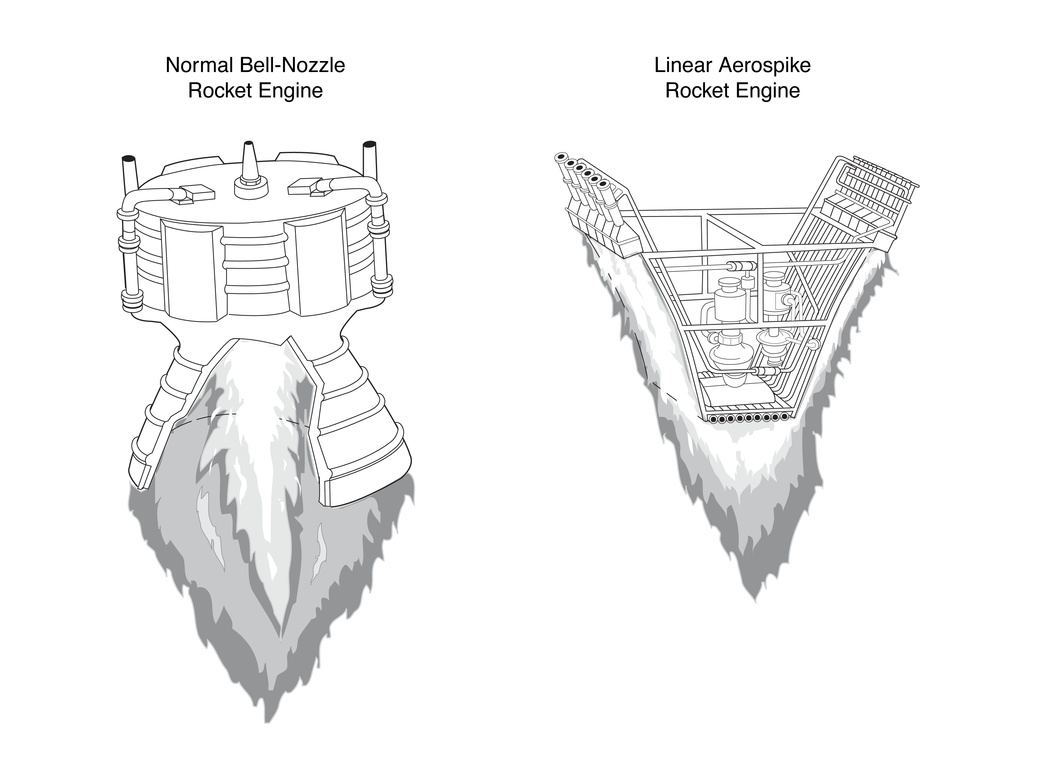EG-0094-01
The X-33 was to have been a wedged-shaped subscale technology demonstrator prototype of a potential future Reusable Launch Vehicle (RLV) that Lockheed Martin dubbed VentureStar. The company hoped to develop VentureStar early this century. Through demonstration flight and ground research, NASA’s X-33 program was to have provide the information needed for industry representatives such as Lockheed Martin to decide whether to proceed with the development of a full-scale, commercial RLV program.
The X-33 design was based on a lifting body shape with two revolutionary “linear aerospike” rocket engines and a rugged metallic thermal protection system. The vehicle also was to have had lightweight components and fuel tanks built to conform to the vehicle’s outer shape. Time between X-33 flights was planned to normally be seven days, but the program hoped to demonstrate a two-day turnaround between flights during the flight-test phase of the program.
The X-33 was to have been an unpiloted vehicle that took off vertically like a rocket and landed horizontally like an airplane. It was planned to reach altitudes of up to 50 miles and high hypersonic speeds. The X-33 Program was managed by the Marshall Space flight Center and was planned to have been launched at a special launch site on Edwards Air Force Base. Technical problems with the composite liquid hydrogen tank resulted in the program being cancelled in February 2001…Learn more




























